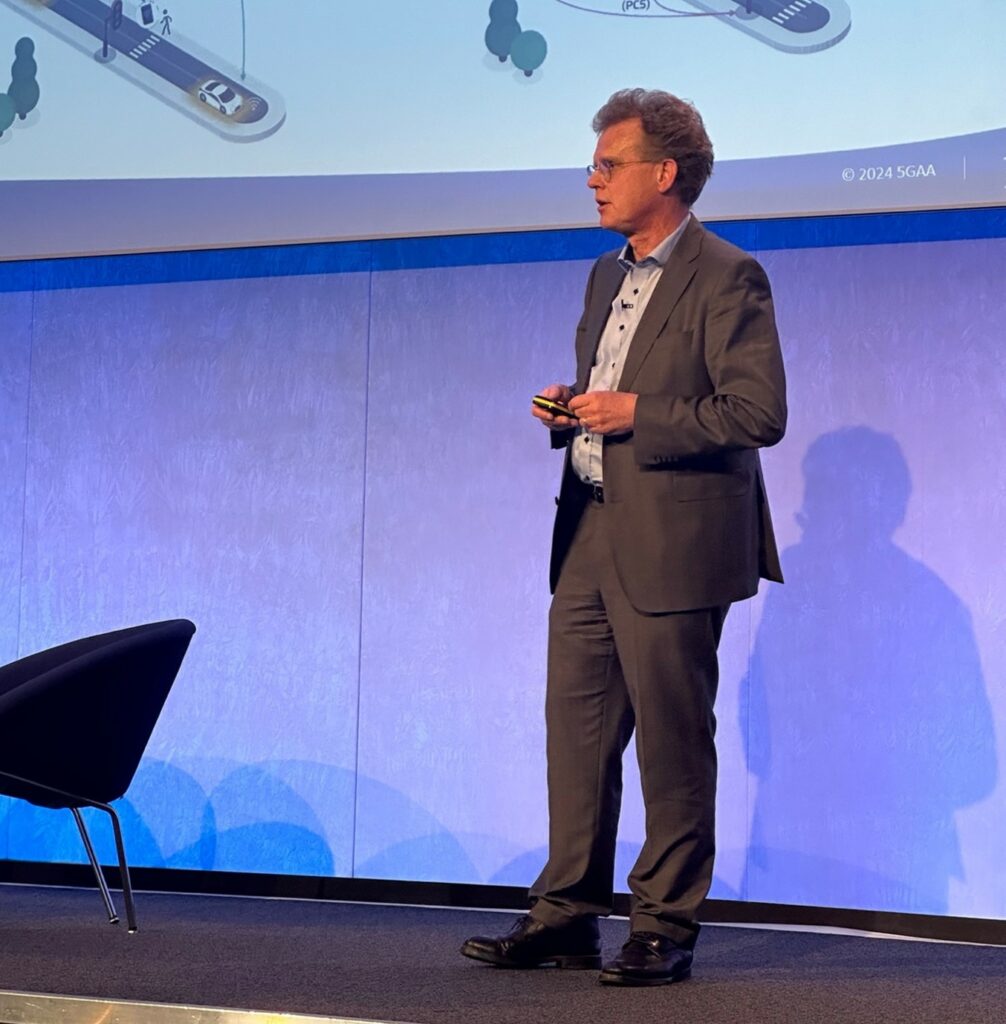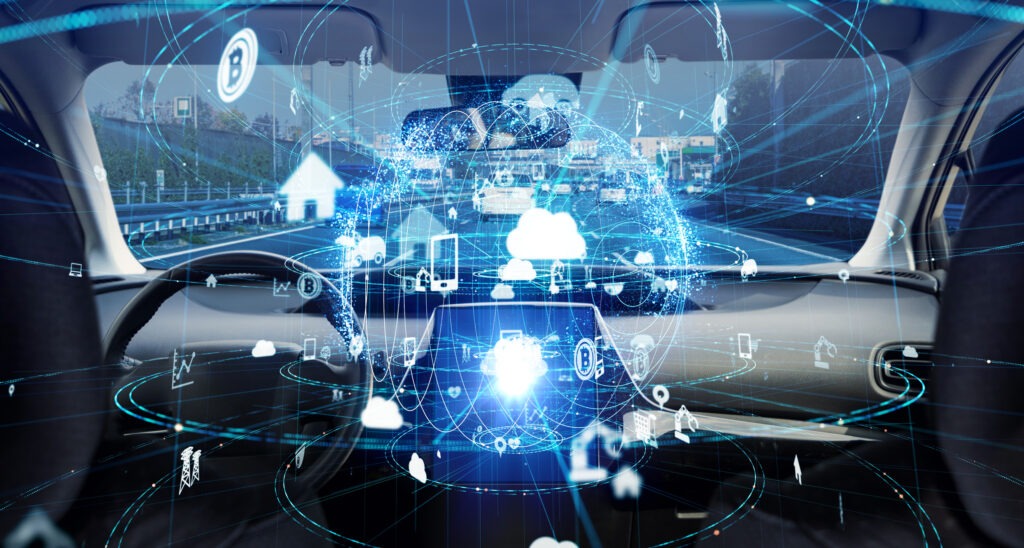Building a successful connected and autonomous platform in the UK
19 March 2024

Connected and autonomous vehicles will play a part in the UK’s automotive future if regulations are passed and trust is built. Autovista24 special content editor, Phil Curry, reports on the latest Society of Motor Manufacturers and Traders (SMMT) event.
The SMMT Connected conference returned in 2024 after a five-year break. In that time, much has changed in the connected and autonomous vehicle (CAV) landscape.
Connectivity development has continued However, a push for vehicle electrification, together with economic struggles, appears to have stalled autonomous advances.
The SMMT’s event was an opportunity for automotive decision makers, legal representatives, developers, and fleet managers to reconnect with the technology.
The hype cycle
‘The future of connected and self-driving vehicles is currently going through the hype cycle,’ explained SMMT chief executive, Mike Hawes. ‘It starts, as we have seen in the past few years, with inflated expectations, some of which may never be deliverable, and certainly not in the timescale forecast.
‘That leads us through the trough of disillusionment, so called when some lose interest and only the committed players remain. These survivors, those with the practical applicability and the business case, rise to the next stage, the plateau of productivity.’
This is particularly true of autonomous vehicles. Since the last SMMT Connected event, there has been a cooling of interest in the technology. There was a noticeable lack of self-driving discussion at this year’s CES.
Meanwhile, one of the best examples of the technology’s demise was Argo AI’s journey. The autonomous-driving venture, backed by Ford and Volkswagen (VW), had millions of dollars in investment but wound down in 2022.
Connected vehicles, however, have kept advancing, with the technology now widely adopted across the automotive market. Over-the-air updates, for both recalls and subscription purposes, are now common. Meanwhile, in-vehicle apps provide real-time navigation data, including roadworks and diversions.

‘The next stage will be vehicle-to-infrastructure,’ continued Hawes. ‘Connectivity to advise drivers of the optimum speed to ensure they make the next green traffic light, or to tell someone approaching a blind intersection that there is another car approaching, or to inform of emergency vehicles in the vicinity.’
Regulation required
For connectivity to succeed, and for the UK to advance self-driving technologies, regulation is needed. This legislation is already passing through the UK Parliament, in the form of the Automated Vehicles Bill.
With £600 million committed to the development of CAVs in the UK since 2015, the bill can open doors to further investment. The latest report from the SMMT suggests that implementing the technology in passenger services such as buses, taxis and ride-hailing, could deliver a market worth £3.7 billion annually.
Yet the UK is already behind other markets which are actively allowing self-driving tests on their roads. The US has several cities where autonomous vehicles are commonplace, while in Europe, Germany has built a regulatory framework to test autonomous vehicles, based on EU guidance.
‘Backing the AV Bill now is fundamental if Britain is to not only develop but also deploy self-driving passenger cars and services,’ added Hawes. ‘We have the foundations, but other major markets are stealing a march, with regulation already in place allowing them to benefit from UK-developed self-driving tech that cannot be rolled out here.’
Pushing for progress
The AV bill has been in the parliamentary system since 2018. It is expected to be approved before the UK General Election which will be held at some point this year.
‘It started with three rounds of public consultation, hundreds of written responses, intense legal scrutiny, and we ended with 70 recommendations which we accepted, which underpinned the safety and legal framework at the heart of the legislation,’ explained Mark Harper MP, secretary of state for transport. ‘It ensures that only vehicles that meet rigorous technical standards will be authorised for our roads.
‘Those vehicles will be as safe as a competent and careful human driver, and that new legal concepts will assign liability to a third party when a vehicle is in self-driving mode,’ Harper continued.
‘It also means that sanctions and suspensions can be applied to companies who refuse to share their safety data. A robust framework brings clarity to investors, certainty to manufacturers and confidence to the public,’ he added.
Isobel Pastor, head of the Centre for Connected and Autonomous Vehicles at the Department for Transport, updated the attendees on the current status of the bill.
‘We are in the final stages of preparation for the Commons Committee stage, which will be happening later in March,’ she commented. ‘The bill provides what I like to think of as the steels in a modern building, and the following months and years will be about putting material in that fills in those steels.
‘So, with regulations and with guidance, we can get the conversation around connected and autonomous technology development in the UK started,’ Pastor said.
Building trust
One of the key messages to come out of the SMMT Connected conference was the need for CAV developers to build public trust. This is needed not just for drivers, but for other road users and pedestrians, especially around autonomous vehicles.
Commissioned by the SMMT, a YouGov survey of 2,089 adults found that 29% of respondents would use an automated bus, shuttle or taxi service if available. One in four (26%) said they would try self-driving features in a personal car, even though they have yet to experience the technology.
‘One of the first things we must do is make sure that autonomy is safe,’ stated Maria Uvarova, SVP of software product at Stellantis. ‘But how can we make sure that customers trust that the vehicle is as safe as their own driving skills?
‘Statistics tell us that autonomous vehicles are safer than human drivers, but it can still be hard to let go. Drivers want to be in control. So how do we make sure that customers really trust us? It must be transparent; visualisation really helps. If you can see on screen what the car sees, you can understand how much more it detects than the naked eye.’
However, accidents and problems involving self-driving vehicles in the US are making headlines and could cause negative connotations to form.
‘When it comes to regulations and current vehicle trials, one of the reasons as to what we are doing in the UK is to set a bar for safety assurance before the technology comes fully to the roads,’ added Pastor. ‘Trust is very important to the public, and they want to know that someone outside of the automotive industry is looking at the technology in an objective way.
‘Around 88% of incidents have a contributory factor of human error. Self-driving vehicles do not mean that there will be no collisions or no accidents. What we therefore must communicate is what does the technology and its safety mean in relative terms? That is a huge challenge,’ she added.
Accessibility benefits
Autonomous driving will benefit all users. Those who are blind or partially sighted will be able to take control of their mobility needs with more clarity thanks to the technology.
‘There are two million people who are blind or sight-affected in the UK, and two-thirds of them feel like they are excluded from travel activities,’ commented Jim Sanders, director of innovation at the Royal National Institute of Blind People (RNIB).
‘We have found through our research that having sight loss correlated with a lower life expectancy. Activities like being able to get out and about increase life expectancy, they reduce mortality rates.
He explained that research conducted by the institute indicated that sight loss correlates with a lower life expectancy. Meanwhile, getting out and about can help reduce mortality rates. ‘I think it is important to a sense of autonomy, a sense of well-being and sense of independence.’
However, overuse of autonomy should be discouraged. Having a self-driving car would be a benefit for someone with a disability, while not having a human present in a public transport setting could be a disadvantage.
‘The heart of any technology is a human,’ added Sanders. ‘If we take buses, for example, blind and partially-sighted people rely on the driver to stop at their requested location and help them find a seat. If you remove the driver in this situation, you are taking a step back, and removing aid from someone who relies on it.’
Recent RNIB studies found that a third of those asked were happy with the potential of autonomous-vehicle technology. Meanwhile, another third were against it. But people with sight loss already have to put trust in others, more so than those without serious vision impairment.
Rob Rugman, head of IT architecture at Motability Operations, discussed how companies need to consider design to ensure accessibility. ‘I think there is a need to start designing kind of the infrastructure for autonomous vehicles in a way which is going to be inclusive from the outset,’ he stated.
‘If we look at the design of electric vehicles, for example, those with the batteries in the floor pan create challenges for conversion to wheelchair-accessible vehicles. Therefore, it would be great for the next generation of vehicles to be designed from an accessibility point of view,’ Rugman added.
The critical enablers
It is not just vehicle technology that needs to be ready for a connected and autonomous future. The infrastructure outside the vehicle also needs to be in place, as does the communication network.

‘One of the fundamental technology components we are using for vehicle connectivity is a cellular vehicle to X technology,’ stated Johannes Springer, director general of 5GAA.
‘This technology is a combination of two fundamental communication modes. Vehicle to network part, where the vehicle is attached to a mobile network, and it is receiving and transmitting data. This kind of technology is widely used.
‘The second is direct communication, and this is very important. There is no mobile network needed, you can exchange information directly between all traffic participants on the road. However, you need this technology to be installed in vehicles and infrastructure, or to be used by those road users not in another vehicle.’
Figuring out 5G
A 5G network will make all of this data sharing possible. This means a network will need to be in place across the entire country.
With 5G connectivity rolling out nationwide, it needs to be robust enough to ensure vehicles will not encounter a black spot. It also needs to be able to handle the increased amounts of data, as any dropout could cause issues with autonomous vehicles.
Sensors and transmitters also need to be installed on a mass scale, as Springer explained. ‘If you are talking about connected traffic lights, for example, it makes no sense to have only a very small portion of these available in a certain city.
‘So, we need to have this on a broad scale. Regulators, public authorities, and road operators need to understand that it makes no sense to equip only 5% of their traffic infrastructure and to then connect the traffic infrastructure to the network.’
This will be a big undertaking, yet one that is crucial to the development of connected and autonomous technologies once vehicles are developed.
Considerable change
The CAV market has changed considerably over the last five years, and these changes have created new expectations. Self-driving cars are unlikely to be on the roads in the immediate future. However, the extended wait can help to instil trust in those who are likely users, ensuring that the technology is well developed and safe.
‘The building blocks are there; it is about putting them together. The benefits in economic terms, accessibility, employment are all there,’ Hawes said. ‘Yet barriers are also there, the regulatory framework is required, so the technology can be developed in the UK.’
‘The other key theme is that we ensure we take the consumer with us. If there are issues with autonomous vehicle introduction, if you lose the trust of the consumer, then it is hard to get that back again. A safe deployment of technology is key for the automotive industry.’



